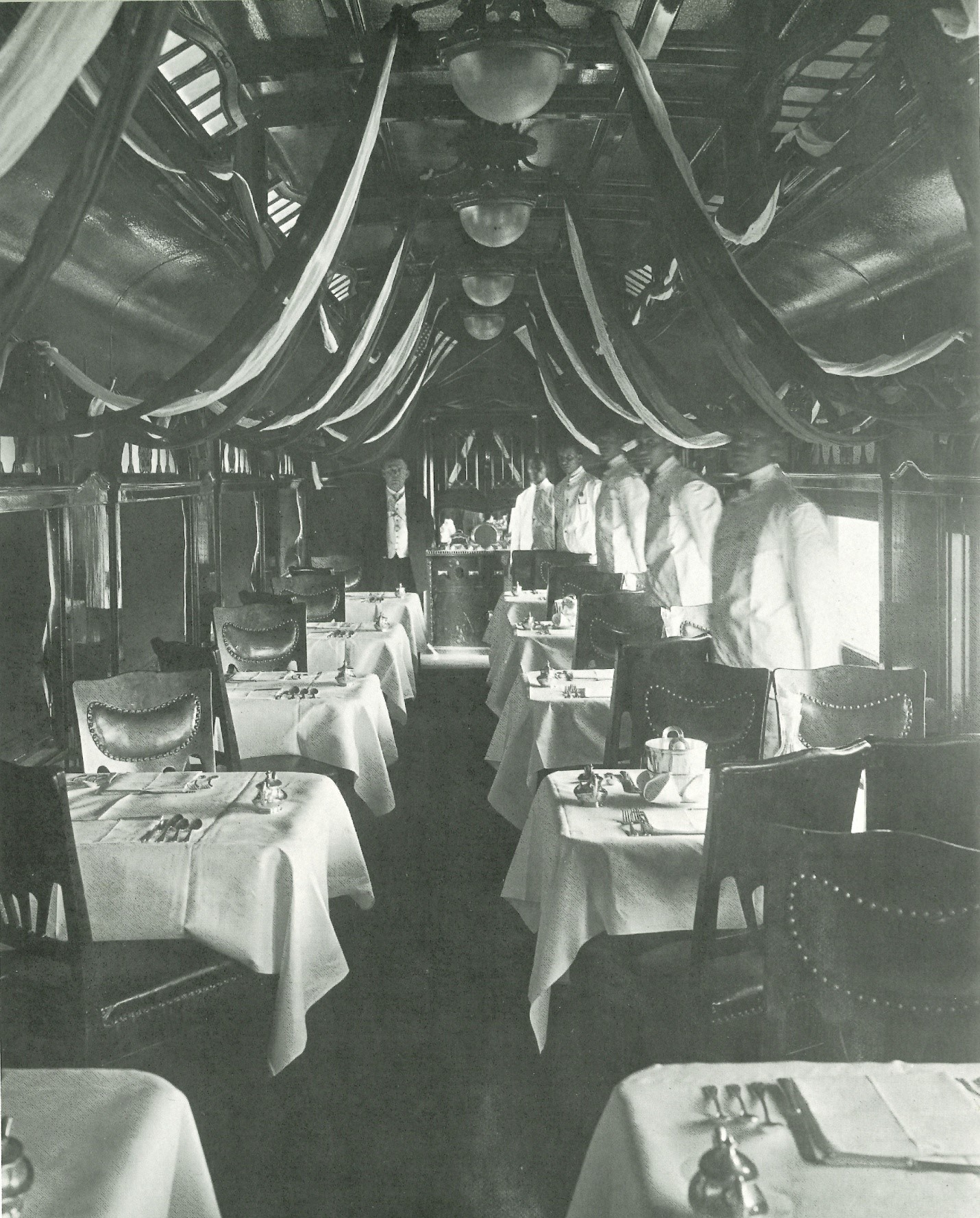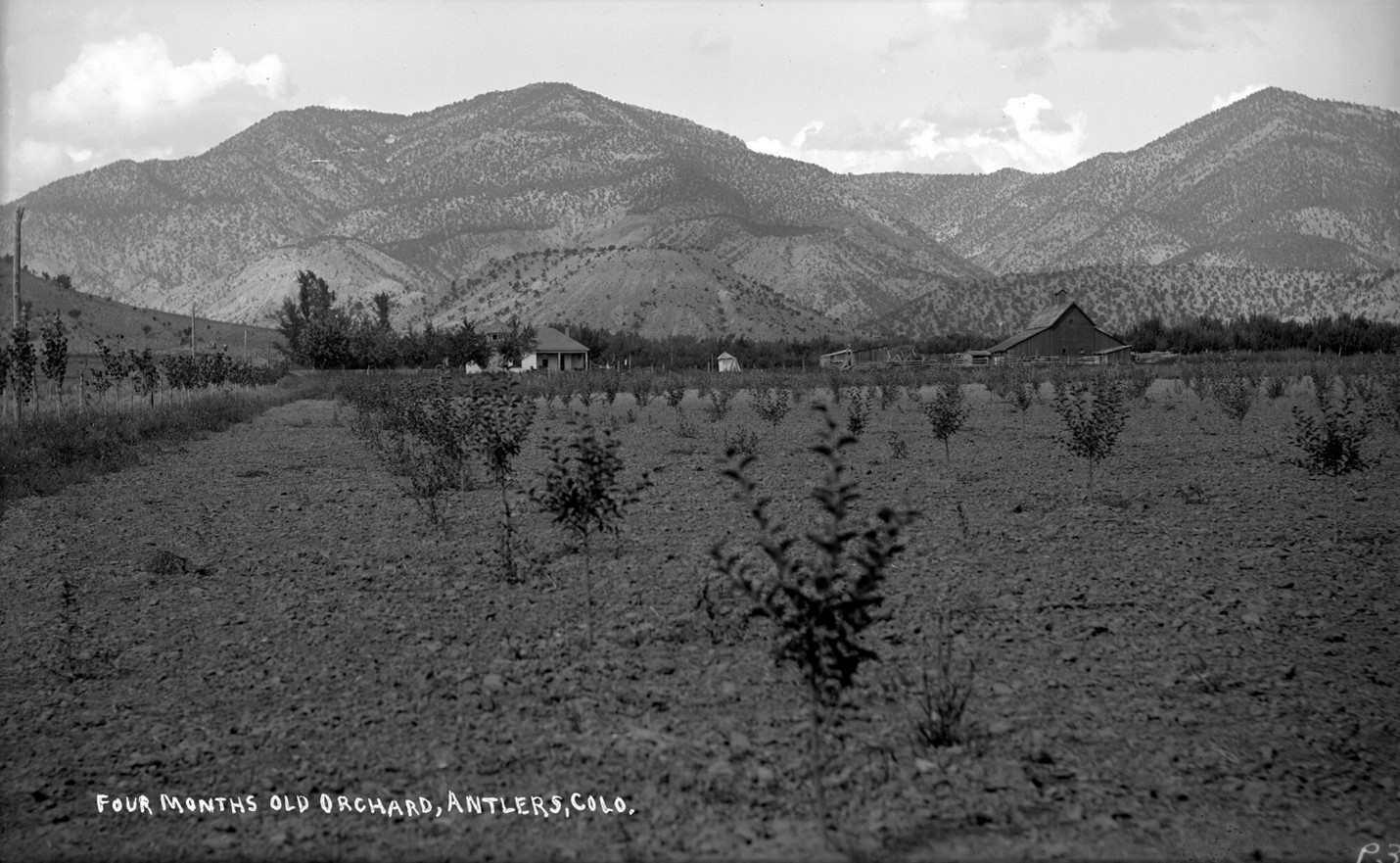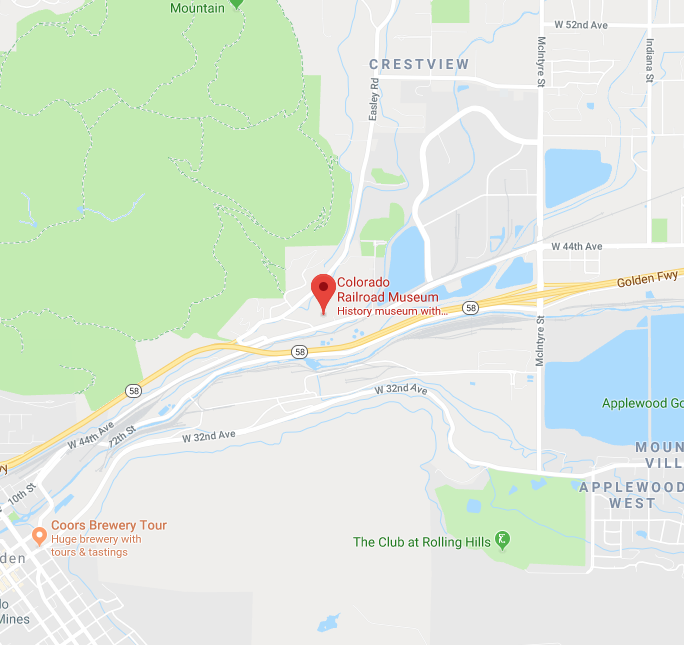Happy August! This summer continues to be a hot one and what better way to cool down than on a Denver & Rio Grande Railroad (D&RG) mountain excursion? To accompany the excursion, we are featuring a green apple pie, offered as a special on the D&RG Railroad.

Figure 1 Denver & Rio Grande Railway map, 1881.
Before we share the excursions and recipe, let’s discuss Denver & Rio Grande’s history. The Denver & Rio Grande Railway was incorporated in 1872 by Civil War veteran General William Jackson Palmer. Palmer intended the railway to go south toward Texas, though it ended up pushing westward instead. Palmer also created the Denver & Rio Grande Western railway which connected to D&RG in Utah. The two officially merged in 1921 becoming the Denver & Rio Grande Western Railroad.

Figure 2 William Jackson Palmer, founder of the Denver & Rio Grande Railway in 1871.
D&RG Railroad’s passenger department produced a booklet in 1900 that was distributed among railroad officials, served to provide information about Colorado. Called The Opinions of the Judge and the Colonel as to the Vast Resources of Colorado, the booklet talked about:
“the many advantages which [Colorado] offers to the rich and poor, its attractions for pleasure seekers and invalids in its climate, health resorts and pleasure grounds, the wealth of its mountains and the fertility of its valleys.”

Figure 3 Cover of The Judge and the Colonel booklet produced by D&RG in 1900, Colorado Railroad Museum Collection.
The booklet detailed travels along the D&RG route through the conversations of a major, colonel, and judge, with the major and the colonel being newer visitors to the state, and the judge being more experienced. The booklet broke down the various Colorado industries including mining (hard rock and coal mining), cattle, and farming (including fruit such as apples). The book compared Colorado to Switzerland touting the benefits of the Colorado air and noted its healing effects for people suffering from tuberculosis.

Figure 4 interior page of The Judge and the Colonel, Colorado Railroad Museum collection.
In addition to information about the state itself, the booklet also detailed the various scenic routes that passengers could take on the D&RG including one called the Circle Route. According to the booklet, the Circle Route “has become a favorite trip for tourists and is extensively patronized.” Named for the circular route the locations made on a map, passengers could ride from Denver to Silverton to Ouray to Montrose but also notes that the Rio Grande Southern allowed for more options from Durango to Ridgway.
One of the other things the booklet mentioned extensively were the dining options aboard the train featuring “an elegant dining car, which is managed upon the same high standard of excellence that characterizes this popular railroad” including “a polite attendant” with “a table spread with the whitest of linen and laden with an elegant service of china and silver.”

Figure 5 Interior of a D&RG dining car, 1910.
Now let’s discuss the history of apple orchards in the state. Apples were grown in North America as early as the 1600s when colonists were first arriving. As settlers first came to Colorado in the middle of the 19th century, there was a common misconception that fruit wouldn’t grow well there. By 1900, however, Colorado had apple orchards spread across the state, in the foothills and mountains, and down into the Southwest. Colorado became one of the largest apple producers in the nation with numerous varieties including green apples.

Figure 6 Apple orchard in Antlers, Colorado, early 1900s Denver Public Library, Western History Collection.
The history of apple pie is a rich one extending back to 1300s England where it spread from there. As Europeans spread apple trees to the various locations they colonized, apple pie went with them. Green apples are used in a pie instead of red as a savory counterpart as green apples are tarter and sourer than red apples.

Figure 7 Medieval pie maker.
We hope you enjoyed our brief history of D&RG tourism and apple cultivation in Colorado. Today’s recipe comes from Caroline Trask Norton’s 1903 Rocky Mountain Cook Book: For High Altitude Cooking. Though the recipe doesn’t specify green apples for apple pie, it does call for sour apples (which, as mentioned above, can be green). If you do try the recipe, please be sure to let us know in the comments below or on our social media channels.
Recipe
Rocky Mountain Cook Book Green Apple Pie Recipe
Cut sour apples in quarters, peel and core, and slice. Place them evenly in the plate, pilling a little in the center. Cover with half a cup of sugar; season with one-half teaspoonful cinnamon or grated nutmeg, and teaspoonful of butter. In the spring of the year when the apples have lost their flavor, season with lemon juice and a little of the grated rind. Cut slits in the upper crust for the steam to escape, dampen the edges of both upper and under crust, press them together. Place around edge a half inch strip of the pastry; moisten it before putting on so it will cling to the crust. Bake about thirty minutes in a hot oven, try the apples to see if done, with a straw or fork.
Rocky Mountain Cook Book Plain Pastry (Enough for One good-sized Pie)
1 ½ cups of flour.
½ cup lard.
2 tablespoonsfuls of butter.
1/8 teaspoonful of salt.
Ice water.
Sift the flour and salt together, cut in the lard with a knife or rub in with the tip of the fingers, then cut in just enough ice water to hold it together. In putting in the water add only a few drops at a time, so as not to get too much. The pastry should be dry. Flour the board well, and roll out the pastry lightly, patting it with the rolling pin to get in shape to roll. Cover it over with little bits; sprinkle a little flour over the butter. (The pastry should be rolled in an even square). Fold over the two sides to nearly meet in the center, then fold the ends over again on over the other, making a square piece of pastry; pat and roll out again, place the other tablespoonful of butter and roll and fold in the same way; roll and fold once more, making three times in all. The pastry is then ready for use. All pastry is better to remain on the ice some time before using. It can be kept a week or more in this way.

Figure 8 Denver & Rio Grande dining car menu special featuring green apple pie, 1906.

Figure 9 Denver & Rio Grande dining car menu cover, 1906.



